Olympus
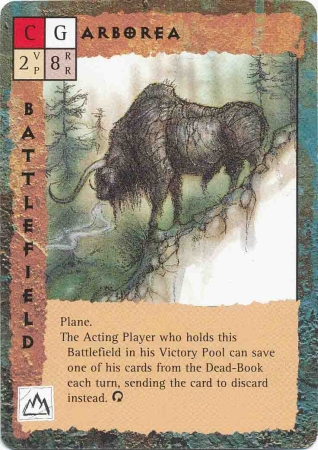
Olympus

|
|
|
|
|
|
|
|
|
|
|
|
The vaults of Olympus (and those of neighboring
[Gladsheim]) are at first glance a quandary.
Their position in the great wheel of the
outer
planes places both of them on the chaotic
side of the
wheel, yet both of them sport organized
pantheons. Olympus is
the home of the Greek and elvish pantheons,
while Gladsheim is
the native land of the Norse
mythos.
In truth, only the topmost layer of each
plane is dominated by
the realms of these mythoi, but their
realms hold sway over such
a large AREA that xtra-planar travellers
and scholars took the
planes' names from these mythoi. In the
case of Olympus, the
Greek pantheon receives the nod (and the
name) due to the xistence
of the permanent multi-planar conduit
known as Mt. Olympus
(see Features of the Astral Plane,
page 72).
Of secondary importance is the fact that
most of the barriers in the
realms controlled by the elvish and Greek
pantheons are
tightly controlled by these pantheons.
The barriers to the layers
adjacen to the elven lands open into the
waters of Tethys,
while those in the Greek realms connect
to small islands in that
infinite sea.
For this reason, in PMPs where the elvish
and Greek
pantheons are worshiped, this plane is
known as Olympus.
In the planes where Mount Olympus does
not exist and the gods of
the ancient Greeks are therefore unknown,
the plane is known as
Arvandor, the High Forest, and its layers
are given elvish names.
The plane of Olympus is divided into three layers.

Olympus (or Arvandor) is the name of topmost
layer of the
plane as well as that of the plane itself.
It is the domain of the
realms of the elvish and Greek pantheons,
which are separated
by a few thousand miles of wilderlands
unclaimed by any realm.
This layer is one of steep mountains cut
by great passes and
monstrous broadleaf trees rivaling the
heights of terrestrial
sequoias. Its hillocks are the size of
Prime planar mountains.
They are covered with arbors of grapes,
untended orchards, and
fields of wild wheat. The layer itself
is slightly convex, so that
while Olympus and Arvandor both occupy
the highest pinnacles
of land within their realms, neither citadel
can see the other.
Away from the settled and claimed areas,
the layer grows wild
quickly. Many fell beasts and creatures
such as giants and cyclopes <>
roam the lands to challenge those who
adventure within.
OSSA (called Aquallor by the elves)
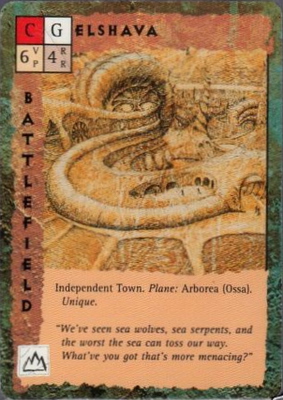
Ossa (called Aquallor by the elves) and
its barriers are usu.
found in the watery domains of Sashelas
of the elves and
Poseidon
of the Greeks. It is the outflow of the river Oceanus
which began in the farthest layer of Elysium,
Thalasia. (There are
often reports of huge, funnel-like maelstroms
that lead directly
back to Thalasia in an unending circle.)
Unlike Thalasia and the
water of Lunia in the first of the Seven
Heavens, the seas of
Ossa are for the most part shallow, no
more than three feet in
depth over most of the realm. Great chasms
open up in places
there, and it is in these that other chaotic
good sea gods make
their domains.
(called Mithardir [white dust] in
the elvish tongue) is the
third layer of Olympus. It is a dusty
place of blowing white sand
and snow. It is temperate in most of its
domains, but all things are
covered by the dust. Both the Greek and
elvish pantheons have their
own lejends concerning other powerful
beings that once dwelt in
these regions. They are now GONE and their
realms and the treasures
are buried beneath the dust. What creatures
or powers still
live within this disintegrating land is
unknown even to the more
adventurous of the deities.
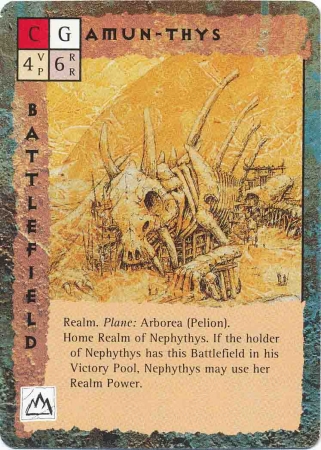
Features of the Plane of
Olympus
The creatures usually
identified as being of the Upper Planes can <>
be found in parts of Olympus:
hollyphants,
planetars,
foo
creatures, devas,
solars,
and agathia.
The plane of Olympus is also the home
of great beasts and and fantastic creatures
that either fathered or were
created from similar beings on the PMP.
Massive
boars, bears, and wild cattle greater
than any seen on the Prime
roam the wilderlands of the plane. Many
rocky mountain fastnesses
are home to powerful medusae, chimera,
and gorgons. Rebellious
titans still roam over parts of the first
layer, and giants are found
there to challenge both man-god and elf-deity.
Only creatures from
the Greek or a DM's elvish lejends should
be found in the plane of Olympus: giant
eagles, lions, bulls,
wolves, serpents, hawks, pegasi, harpies,
cyclopes, and sphinxes
are examples of such creatures. The stats,
appearances,
and abilities of these creatures are altered
as follows:
* The creatures are
larger than those of the PMP.
Small creatures should be considered medium
and medium
creatures are large (large creatures,
though increased in
size, are still large). The demeanor and
bearing of such cretures
are more powerful as well.
* Subtract 2 from the listed AC.
* Creatures and monsters
that strike with claws gain a +2
bonus to hit opponents.
* HD are doubled for
purposes of determining HP
and effects of combat.
* One in 20 human-like
creatures (such as medusae or harpies)
have some magickal ability (as a M-U of
level 1d10).
As noted above, the
first layer of Olympus is the home of
two huge realms
that contain the pantheons of the Greeks
(from DEITIES & DEMIGODS).
and the elves (from DDG
& UA). Each <of> these oversized
realms
contains
the domains of the Deities of each
pantheon. Many of these domains are larger
than the
realms of gods in other planes.
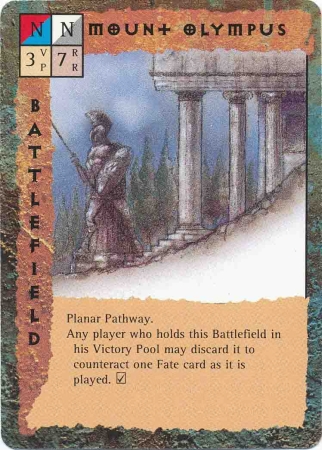
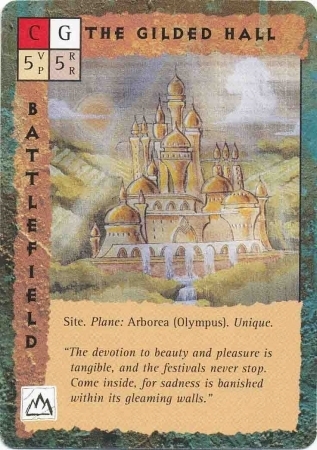
The Greek pantheon tends
to be a short-tempered, lusty, partying
lot; more chaotic than any other pantheon
SAVE perhaps the
Norse. Yet they have gathered together
in a common front on at
least two occasions: once to defeat the
great titans and CAST the
majority of them into Tarterus, and the
second time to fashion
Mount Olympus as a continuous conduit
that reaches
from the plane of Olympus through the
Astral and into Hades, touching all
of the Prime planes where the Greek gods
are known. It is not certain
that the Olympian gods forged this mountain;
others claim
that the Olympians are little more than
inheritors and usurpers of
a conduit that existed since before the
titans ruled Olympus.
Whatever the case, the gods of the Greek
pantheon have
remained together in the same location,
at the head of the mountain,
for mutual benefit and defense. This does
not mean that the
various Deities do not seek to advance
themselves over others
or create mishaps for each other's followers,
only that they operate
out of the same general AREA.
The greatest of the
domains is that of Zeus, the leader of the
pantheon,
who maintains a great citadel of polished
marble and gold at
the highest spot of the Olympian
Realm. There he rules alongside
Hera, his
wife. Other Olympian deities dwell according to their own
needs && fancies. Aphrodite is
lives in a nearby palace of mirror-like
quartz && gems, while Apollo's
domain radiates internal sunlight.
The lair of Ares is a massive battlement
near the portal to the Mount
Olympus passage, mirroring that of Athena,
who dwells in a palace
on the far side of that portal. Ares's
palace is said to made of bone,
Athena's of iron. Dionysus's palace is
overrun with vines,
each hanging heavy with grapes. Hermes
lives in a den of gambling.
Poseidon makes his abode in a great sea
that borders the realms of
these gods. The lesser powers, such as
Artemis, Demeter, Nike,
Tyche, and the titan Prometheus,
make their smaller realms among
among these huge domains,
any one of these domains being
larger than a human nation.
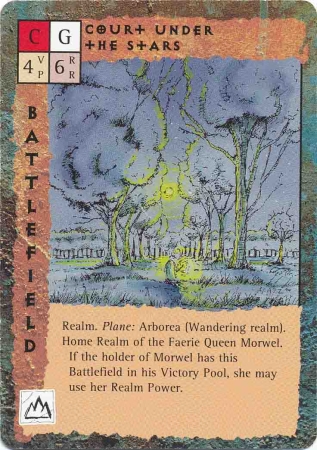
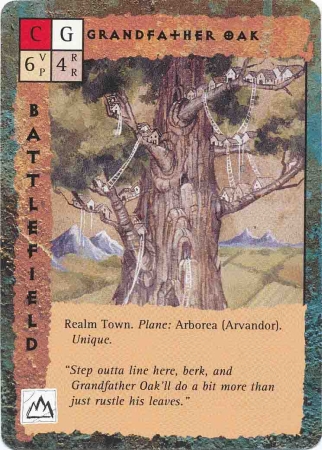
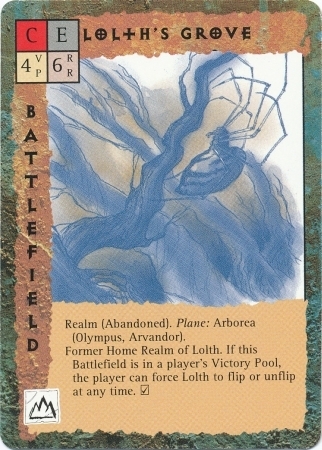
The elvish pantheon
is similar in outlook, but less organized && regimented,
having no chief foe to overthrow || continual
conduit to maintain. They are more G &&
C than their
Greek neighbors. The 2wo pantheons get
along well enough
because they compete for neither land
nor followers. The elvish
deities lack the mighty fortresses of
their human counterparts,
inhabiting small shrines, circles
of natural stones, and small but
ornate homes in the
midst of their domains.
The elven gods are led
by Corellon Larethian, who
rules the
Seldarine (as these deities call their
pantheon) as is the only
Greater Deity among them, the remainder
being lesser gods.
They include Erevan Ilesere, whose portfolio
is mischief &&
change, Solonor Thelandira, whose domain
is thick with forests
and rapidly-flowing streams, and Labelas
Enoreth, the god of
longevity and the opponent of Erevan.
Hanali Celanil, the goddess
of elvish beauty, has a crystal
palace in the center of which is an
enchanted fountain that gives birth to
the CHA-enhancing
pool known as Evergold.
Hanali shares this boon with Aphrodite,
who pilgrimages once per Prime planar
year to renew her own
beauty (to the Greeks, the pool is named
Canathas). The sea that
laps at the borders of the great elvish
realms
is the realm of Deep Sashelas,
venerated by the sea elves (it is through
his realm that the
barrier to the second layer can be reached).
Finally, Rillifane
Rallathil is both his own realm
and his body at once--the Leaflord
is depicted as a great tree. He has the
power, like a sentient form
of Yggdrasil, to penetrate with his roots
to the PMP.
These roots function through conduits,
not as separate
entities to the plane itself. Aerdrie
Faenya makes no true home
in Olympus, but wanders among the layers
of Olympus && Gladsheim
in the company of a multitude of great
birds (10d10, modified
in abilities as noted for creatures of
this plane).
In the
shadow of these mighty Olympian (or Arvandorian) pantheons,
a lesser goddes of the Egyptian mythos
makes her
home in a great palace of dun-colored
stone in the center of a
desert as far removed from the green lands
of the elves as these
domains are from Olympus. Whether Nephthys
is the cause of
this lone desert, whose blowing sands
are reminiscent of
the third layer, or if she is the restraining
force is unknown.
The elven and Olympian
pantheons (and Nephthys, to a lesser
degree) are served by the Chosen, spirits
of those beings thought
worthy of entry into Olympus. These are
similar in appearance
&& abilities to the einheriar
of the Norse in Gladsheim, SAVE that
their weaponry tends toward spears &&
broad swords, and they
are =equally= balanced between males &&
females.
Dragon #243
*template***template*